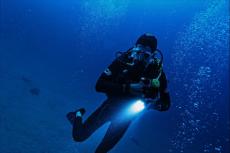Microplastics and the Ocean: The Invisible Threat Divers Can Help Monitor
Divers' Crucial Role in Monitoring and Mitigating Microplastic Pollution in the Oceans.
Distressing images of turtles with plastic straws sticking out of their bodies or dead seabirds with stomachs brimming with synthetic trash justifiably attract public attention.
However, this pollution extends to the microscopic scale from an increasing number of micro and nano plastics. These tiny particles permeate the depths of the oceans, posing significant health risks to marine creatures and humans alike.
Divers play a crucial role in monitoring this pervasive problem, thanks to their unique vantage point and ability to reach underwater environments.
Exploring the microplastics menace
Microplastics are ubiquitous in the world’s oceans. A 2021 study estimated that up to 24.4 trillion pieces of microplastics are floating in the upper layer of the oceans alone.
These pollutants originate from various sources — from microbeads found in cosmetic products to secondary microplastics, which result from the breakdown of larger plastic items like bottles and fishing nets. They may also come from rubber particles from discarded tires and synthetic fibers from industrial processes.
Microplastics measure less than 5 millimeters and are nearly imperceptible to the human eye, especially when floating in water. This makes them a serious threat to marine life, similar to how smog in the air constitutes a breathing hazard for land animals.
The particles also make their way up the food chain. Sea creatures often mistake them for food and snap them up. Once inside their system, these microplastics can cause physical harm, such as clogging physical airways.

Humans ingest the particles through seafood and even from drinking water. Studies suggest that 1 liter of bottled water contains an average of 240,000 microplastic particles.
The role of divers in monitoring microplastic pollution
Divers are uniquely positioned to enhance current plastic pollution monitoring efforts due to their expertise and access to diverse underwater environments, from coral reefs to the deep sea.
Visual surveys
Divers can conduct systematic visual surveys to record the presence and abundance of larger plastic debris, which usually precedes microplastic pollution. By documenting these sightings, divers can contribute to data collection efforts that help track pollution sources and trends.
Sample collection
Monitoring underwater pollution often involves collecting water and sediment samples from various depths and locations. Scientists can analyze these collections to quantify microplastic concentration and composition levels, which is vital for understanding the extent of contamination and its effects.
Conservation diving
Many environmental organizations offer marine conservation programs that revolve around reef restoration, debris cleanup and habitat protection. Divers are essential to the success of these projects. Some also provide education and training on oceanic conservation so individuals can be more involved in mitigating microplastics locally and internationally.
Infrastructure installation and maintenance
Installing underwater monitoring systems requires expert scuba diving skills. In most cases, these individuals must also know how to operate specialized tools for protecting electrical equipment in underwater infrastructure.
This knowledge will be vital to introducing digital automation into microplastic contamination monitoring through the Internet of Underwater Things (IoUT). The European Union has funded IoUT technology that mimics the communication sounds of whales and dolphins to monitor marine conditions in real time.
This represents an exciting development for conservation efforts as these interconnected sensors and devices can reach lower depths than humans and capture data without disrupting the ecosystem. These innovations can also enhance divers’ exploration and mapping efforts.
Protect the oceans from microplastics
Microplastics represent a challenge to ocean health, with far-reaching implications for marine life and human populations. Divers have intimate knowledge of underwater environments and are vital to the fight against this invisible threat. Through monitoring and data collection, they can help with debris cleanup and mitigation measures that pave the way for a healthier, plastic-free ocean.





























